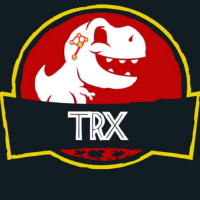TRX: A community-oriented tractography file format#
We propose TRX, a tractography file format designed to facilitate dataset exchange, interoperability, and state-of-the-art analyses, acting as a community-driven replacement for the myriad existing file formats.
Why TRX?#
File formats that store the results of computational tractography were typically developed within specific software packages. This approach has facilitated a myriad of applications, but this development approach has also generated insularity within software packages, and has limited standardization. Moreover, because tractography file formats were developed to solve immediate challenges, only a limited breadth of applications within a single software package was envisioned, sometimes also neglecting computational performance. Given the growing interest in tractography methods and applications, and the increasing size and complexity of datasets, a community-driven standardization of tractography have become a priority. To address these challenges, our community initiated a discussion to design a new file format and agreed to participate in its conception, development, and, if successful, its adoption.
The goal of TRX is to become the first, community-driven, standard amongst tractography file formats. As with other file formats like NiFTI, we believe that TRX will serve the community well and the growing computational needs of our field. We encourage community members to consider early contributions to our proposal so as to ensure the new standard will cover the needs of the wider audience of software developers, toolboxes, and scientists. Our long-term plan is to integrate TRX within the Brain Imaging Data Structure (BIDS) ecosystem.
Acknowledgments#
Development of TRX is supported by NIMH grant 1R01MH126699.
Contents:
